As part of our coverage of this year’s NZ Book Awards for Children and Young Adults, we asked the five shortlisted authors of the Esther Glen Award for Junior Fiction to explain the story behind their story. Here’s how, and why, these books were written.


It is said that wisdom is life experience, well digested. That seems self-evident truth. Life experience is something we all have in common. It is, however, the digestion part that gets me. What about those bits of life experience that cause heartburn and don’t respond to the Alka-Selzer of logic? What do I do with those?
That’s the stuff that creates the author. When I download in writing, I step back from myself, and put the indigestion into my characters. Sometimes it results in something that tastes and feels like wisdom, but mostly it creates laughter – which is the best medicine of them all.
I have a long list of undigested experience that works well with Snake and Lizard: the grumpiness that hides under a coating of ‘nice,’ the silly arguments over trivia, truth so distorted it turns into its opposite. A fear of being unloved! Bossiness! Impatience!It is delicious alchemy to turn all these into laughter.
I have a long list of undigested experience that works well with Snake and Lizard …
In Helper and Helper, Snake and Lizard continue to see themselves as special rescuers of other creatures, while at the same time they flounder in their own mistakes and misunderstandings. They are genuinely fond of each other and can sometimes accommodate their differences. Sometimes, though, they can’t. When they go through weeks of being unable to agree about anything, they go to Old Tortoise to find out which one is at fault. The advice they get is: ‘When two people quarrel, both are in the wrong.’ Snake and Lizard are exultant. At last they can agree on something! Old Tortoise is stupid!
The advice that the Helpers give is based on their own experience. The desert is flat, so of course the earth is flat. What about mountains? Well, there are mountains which are ups and canyons which are downs. If you put an up and a down together, it equals a flat.
Lizard tends to be talkative and energetic. Snake is slower and her silence is tempered with cunning. She finds a way to make sure her name appears first on their noticeboard. She also finds a way to help Lizard when a crowd of his Lizard Aunts decide to move in.
Helper and Helper is the third Snake and Lizard book, and probably the last. The situations in the first book found characters and setting in the Arizona desert where I spent time working as an author in a variety of schools, including one on a To’hona reservation. Images in my mind were vague until Gavin Bishop brought them to life with his lovable illustrations.Now I can’t imagine Snake and Lizard as other than Gavin has depicted. His pictures always take the stories to a larger place.
This reinforces for me what I have always claimed: the illustrator is co-author. That is a piece of experience that has been well digested.
Joy Cowley
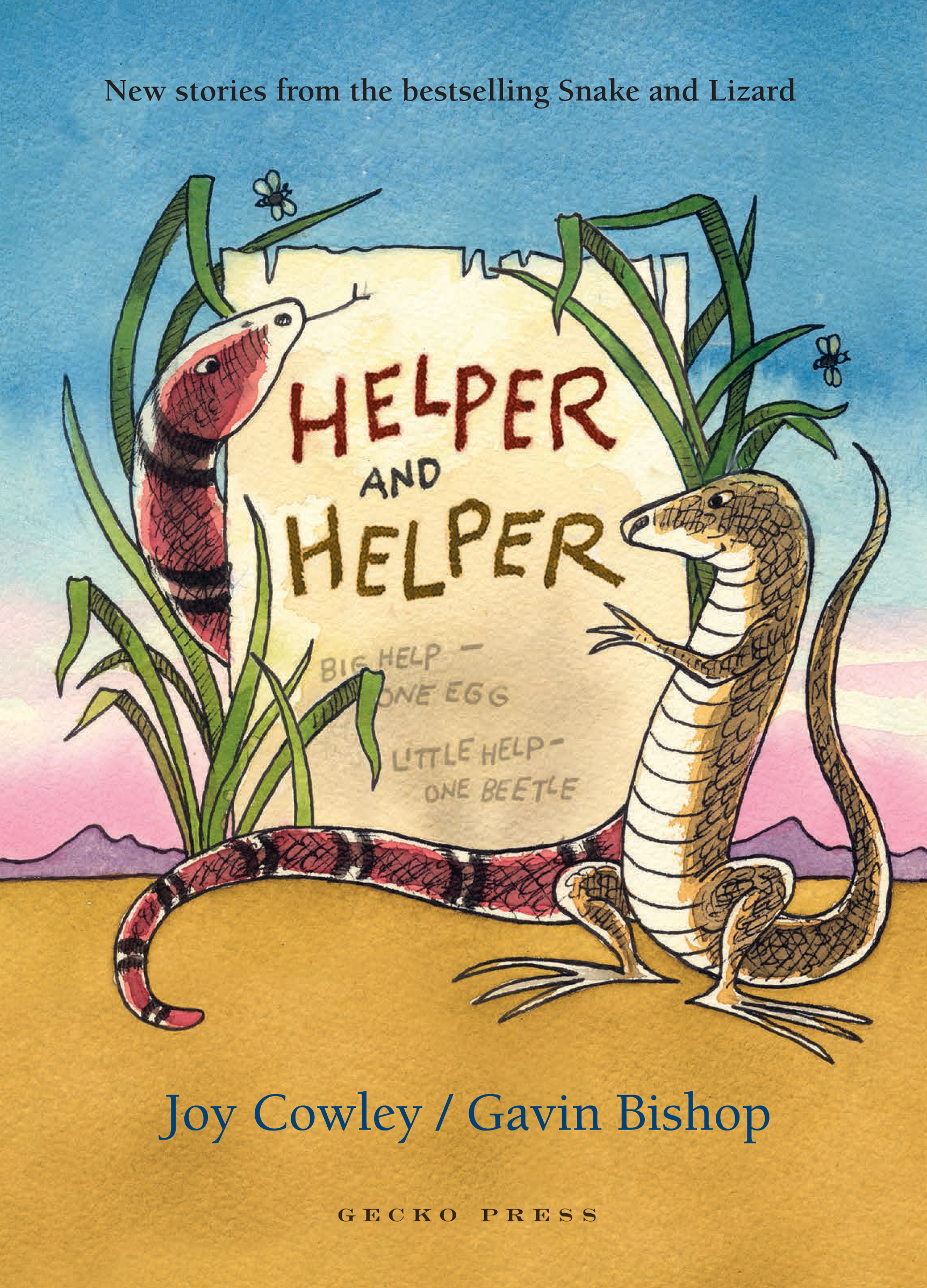
Helper and Helper
By Joy Cowley
Illustrated by Gavin Bishop
Published by Gecko Press
RRP $29.99 (hardback), $22.99 (paperback)
Why do I do it? This thing called writing? Why not just enjoy a relaxed life being an English teacher? Those are good questions and I want to try to answer them as an explanation of how My New Zealand Story: Bastion Point came about and why I think telling stories is not unlike a spiritual experience.
Earlier this year, I heard Neil Gaiman talk about what drove Sir Terry Pratchett to write, and he said: ‘There is a fury to Terry Pratchett’s writing … The anger is always there, an engine that drives … And that anger, it seems to me, is about Terry’s underlying sense of what is fair and what is not.’
I think this is a little of what fuels my writing. I don’t know if I would call it fury but I certainly would call it passion. Over my lifetime, people have commented that I am a ‘justice person’ but some say it as if that is a bad thing. I don’t believe it is. History has shown us that any change for good is brought about by those powered with fury or passion to make the world a better place, to right wrongs, to stand up for those who cannot stand up for themselves. Ordinary but driven people without superpowers – just a steel will to never give up their cause.
One such group of superheroes, and the subject of this novel, is the people of Ngāti Whātua Ōrākei who were dedicated to the fight to get their stolen land returned. People like Joe and Grant Hawke, Roger and Mike Rameka, who led a bedraggled band of passionate protestors into an occupation that lasted 507 days – days affected by horrendous weather, stinging attacks from the media, legal threats from the government. Even some of their own elders turned their backs on the group, calling them an ‘embarrassment’ – much to Prime Minister Rob Muldoon’s delight.
To put up with all that adversity, to have that kind of stamina and persistence required faith, a great belief in the rightness of what you are doing and fury stemming from the long history of wrong-doing and downright criminal actions of the Crown against the iwi. But, because of that passion, that manawanuitanga, the protest group and their supporters prevailed. Twenty years after the start of the occupation of Bastion Point, years of continued petitions and court appearances and submissions and more protests and a huge, huge cost, the government finally compensated Ngāti Whātua for their loss. Theirs is a story of true courage: Joe Hawke and the story of what he did is one that has earned its place alongside the stories of our other New Zealand heroes.
Because I was writing about a time that many, many people would remember (and many of those involved are still alive and well), I wanted to make sure I got the history ‘right.’ In the beginning, I thought it would be a straightforward task of gathering and reading the documentation and accounts. But (re)telling history is never straightforward. Firstly, there were so many errors in ‘official’ reporting. I had to get a copy of the coroner’s report of the death of Joann Hawke to find out her correct name and date of birth. Even the coroner got it wrong – it was only in reading Mavis Hawke’s account of that tragic night did I know I had at least one piece of evidence I could rely on – a mother never forgets her child’s birthday or her name.
In the beginning, I thought it would be a straightforward task of gathering and reading the documentation and accounts. But (re)telling history is never straightforward.
The other difficulty I had was the bias of the newspapers at the time: the New Zealand Herald was clearly pro-Muldoon but the very left-wing/communist papers were equally as biased. I had to sift through letters, diaries, promotional material (both for and against the occupation), watch sometimes cringe-inducing, Eurocentric documentary and news broadcasts. People remember different things – even those who lived on the Point; the weather; the living conditions.
As weather featured a lot, I thought I would endeavour to make that accurate. I enlisted the services of an old uni buddy who is a NIWA scientist. He gave me all the weather readings for Tamaki for 1977 and 1978. I copied screeds of notes from vox-pops of the protestors during that time and from later interviews; I scoured reported speech and biographies/autobiographies to ensure that words I stuck into the mouths of the real people were their words.
I thought I was done and ready, but something was holding me back. So I took a walk around Takaparawhā to really place myself in the shoes of those who stood on that land. Yes, the sweeping view of the gulf was breathtaking. It was quiet. The memorial garden and the memorial rocks were lovingly tended. But the more I walked around the place, the heavier became my heart. There was a hui or tangi at the marae and I walked toward the meeting house. An angry red notice warned me I was approaching private property. An almost palpable wall of anger and grief made me hesitate. What was I doing? Why was I here?
I walked back down to my car, heart heavy. What right did I have to tell this story? It wasn’t a game. It wasn’t make-believe. I looked back up the hill, the long grass rippling in response to the sea wind. I felt like a voyeur. I climbed into the rental car, turned on the engine and began the drive down the road. Suddenly, I felt there was someone in the back seat. I stopped and turned to look, but it was empty. I turned back around and waited. That’s when I heard her. Erica. My main character, who had been quiet and illusive for nearly a year. She leaned close and said, ‘Now you can write the story.’
And I did – because regardless of who I am, theirs is a story worth telling to our children.
Tania Roxborogh
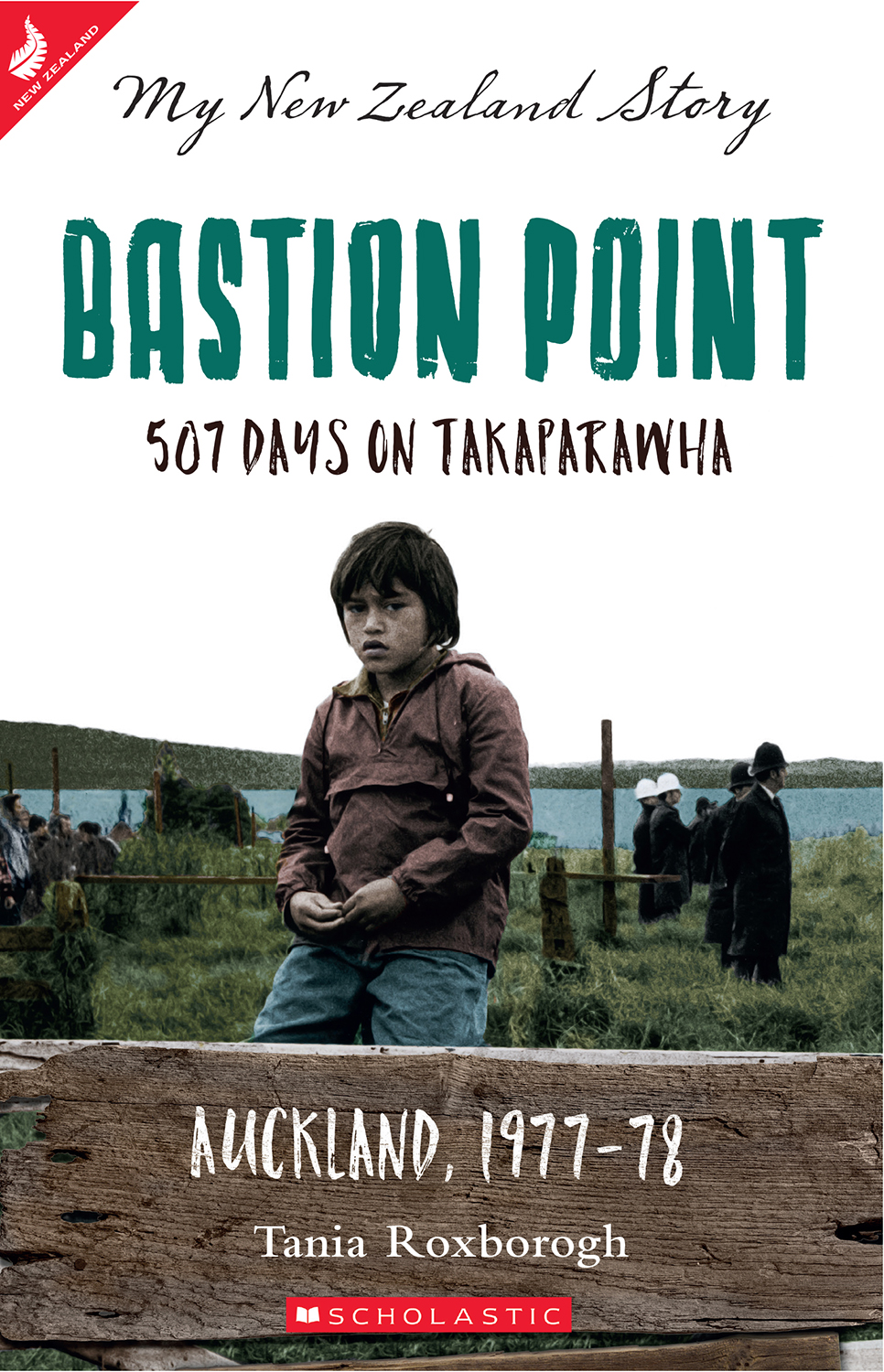
My New Zealand Story: Bastion Point
By Tania Roxborogh
Published by Scholastic NZ
RRP $17.99
The story of Sunken Forest begins in January 1957, when I attended a summer camp at Waikaremoana. On my first swim in the lake, I looked down and saw stumps of trees sticking up from the bottom; in other places there were piles of fallen logs on the lake floor. When I asked the camp leader about this he said that the lake had been formed by a huge landslide some time before, although he didn’t know how long ago it was. I imagined it was only a hundred years or so. That idea was reinforced later in the week when we took a launch trip around the lake and saw the remains of trees still poking through the surface. Only much later did I learn that the event happened more than 2,000 years ago, and that the wood in these trees was so hard they still hadn’t rotted away.
In March 2011 I spent two weeks working in Opotiki schools for the Book Council. On the middle weekend, I returned to Waikaremoana for the first time since that boyhood camp. The place where we had pitched tents 54 years before was now a DoC campsite, and a whole lot more civilised than what we’d experienced. The sunken forest was no longer as obvious, but with the right lighting conditions, stumps and logs can still be seen. Only one tree still pierces the surface. Even though there are these changes, to me the place was still magical. As I sat in my car on the lake edge, sheltering from the rain, I began thinking of it as a location for a story.
Two further visits were needed before the story took shape. On one visit I came across a school group from Gisborne using the area for their school camp. As a teacher, I’d supervised several camps and knew of the tensions and excitements that are generated when a group of normal kids move out of the classroom to live together in the wild. I have witnessed many events like those told in Sunken Forest; creating a fictitious school camp was easy.
As a teacher, I’d supervised several camps and knew of the tensions and excitements that are generated when a group of normal kids move out of the classroom to live together in the wild.
Back in 1957, during that launch trip around the lake we stopped at a beach for a swim. My 15th birthday had been a couple of weeks before, with the major gift being a Pierpont Swiss-made watch. Even though it was labelled as watertight, I wasn’t taking any chances with such a prized possession, so I removed it and put it on the shore. After the swim I forgot it, and we sailed away leaving the watch in the wilderness. The launch did go back to look for it the next day, but without success. At the time I thought it had probably been stolen by a weka, as we’d seen some in the nearby bush. When planning for Sunken Forest I decided that the watch would be taken by an eel.
Eels have fascinated me since I first learnt of their amazing life cycle. An eel story was always going to be written at some stage, and Lake Waikaremoana eels fitted the requirements. They do exist in the lake, having been introduced by local iwi as a food source. They can grow to a huge size because there is no way of returning to the sea and completing the life cycle. The one I’ve portrayed was based on a huge eel I saw living in a stream near the Perano whaling station in the Marlborough Sounds. For a hundred years it had lived on whale scraps leaking into the stream from the factory. This was in the 1960s and the factory had recently closed, stopping the food source, so this eel was left to scrounge scraps from visitors. It did this by coming out of the water onto the grass and begging. She was the perfect model for the Elsa in my story.
Des Hunt
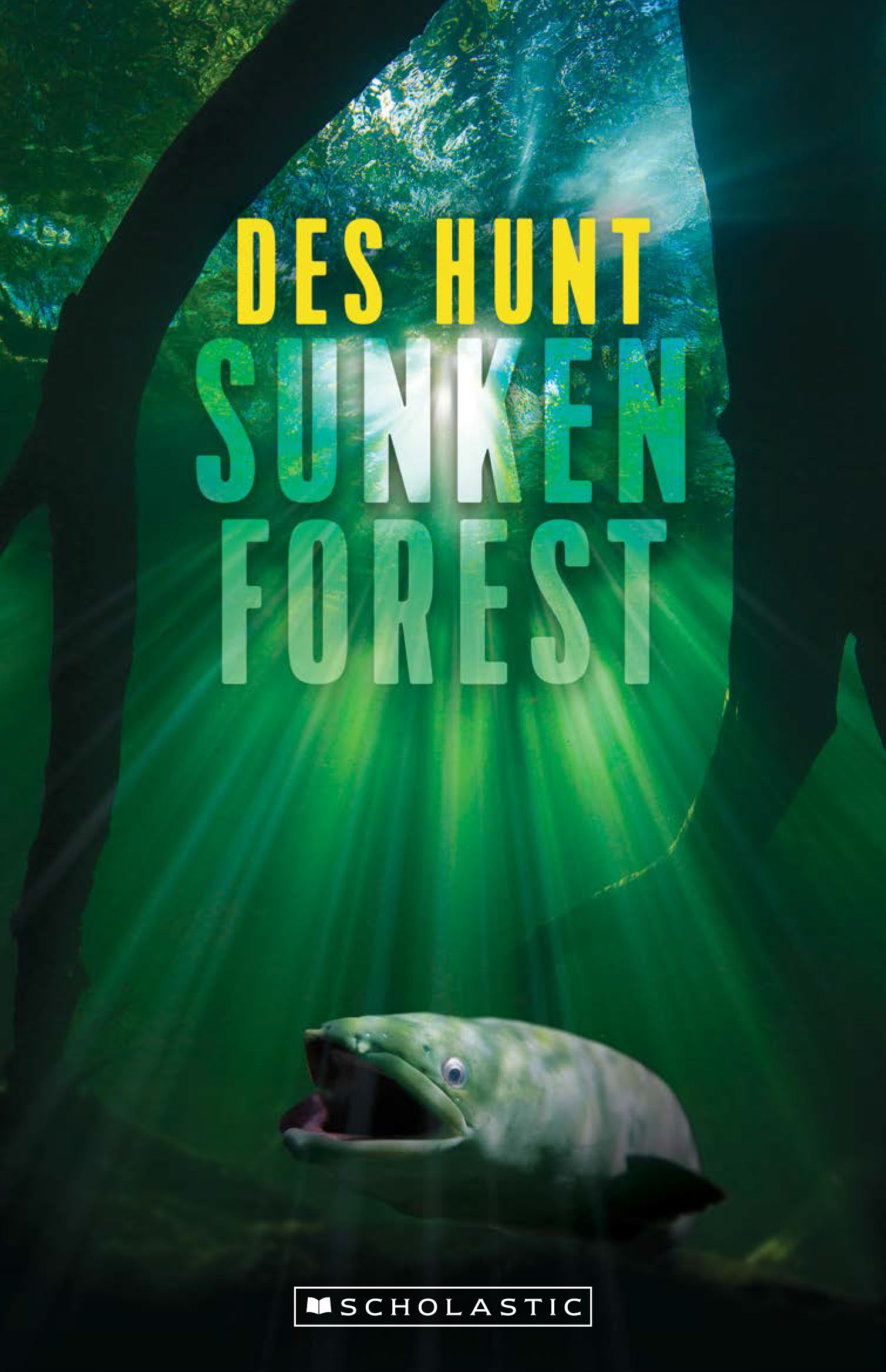
Sunken Forest
By Des Hunt
Published by Scholastic NZ
RRP $17.99
For me, the best part about writing is using everyday ‘stuff’ and turning it into a story. The Discombobulated Life of Summer Rain is a compilation of either my own experiences or the experiences of people around me. Of course with a fair bit of exaggeration and a good dose of imagination.
Pop was the first character to form. He came directly from my children’s own ‘Pop’ (step-Pop). A stingy, miserly old man with a truckload of investments and savings. He’d always be saying things like hurry up and shut that fridge! Or turn off the light will ya! Or it’s all right for you lot but I’m a pensioner! He’d say having a car radio only encourages thieves, which is why he’d taken his out, and a good bit of advice, never buy a used car with tow bar because it’s a sure sign the car will be worn out from all that towin’!
My kids would say, ‘Is he for real?’ And we’d have a good old laugh about it on the way home. I’d say, ‘That guy should be in a story.’
Of course, the Pop in my story needed a run-down dump of a house worthy of him. I grew up in the country and know first-hand about living in a rattly old house with a long-drop loo. Somewhere along the way we got a proper inside toilet, one that really flushed, but those memories of making my way with a torch to that stinky outside loo in the dead of night are still with me.
I grew up in the country and know first-hand about living in a rattly old house with a long-drop loo.
So Dock‘N’Thistle Cottage was born, and subsequently Dock‘N’Thistle Farm. The perfect setting for Pop, who became a huhu-grub-eating, possum-stew-making, chicken-scrap-collecting, retired farmer.
The embarrassing school lunches, I owe to my mother. She thought nothing of (and still doesn’t) squashing leftover peas and mashed potato into a thick brown bread sandwich, then wrapping it up in the old bread bag and calling it a nutritious lunch. How I envied those kids with delicate white bread, ham and tomato sandwiches, carefully wrapped in cling-wrap and placed into pretty lunch boxes along with a box of raisins, a cookie and a mandarin.
I didn’t have any plans when writing this book and I think that’s what made it so much fun. I had a feeling for the story but only saw the next little bit in front of me. It’s what got me jumping out of bed each morning; I was dying to know what was going to happen next!
Julie Lamb
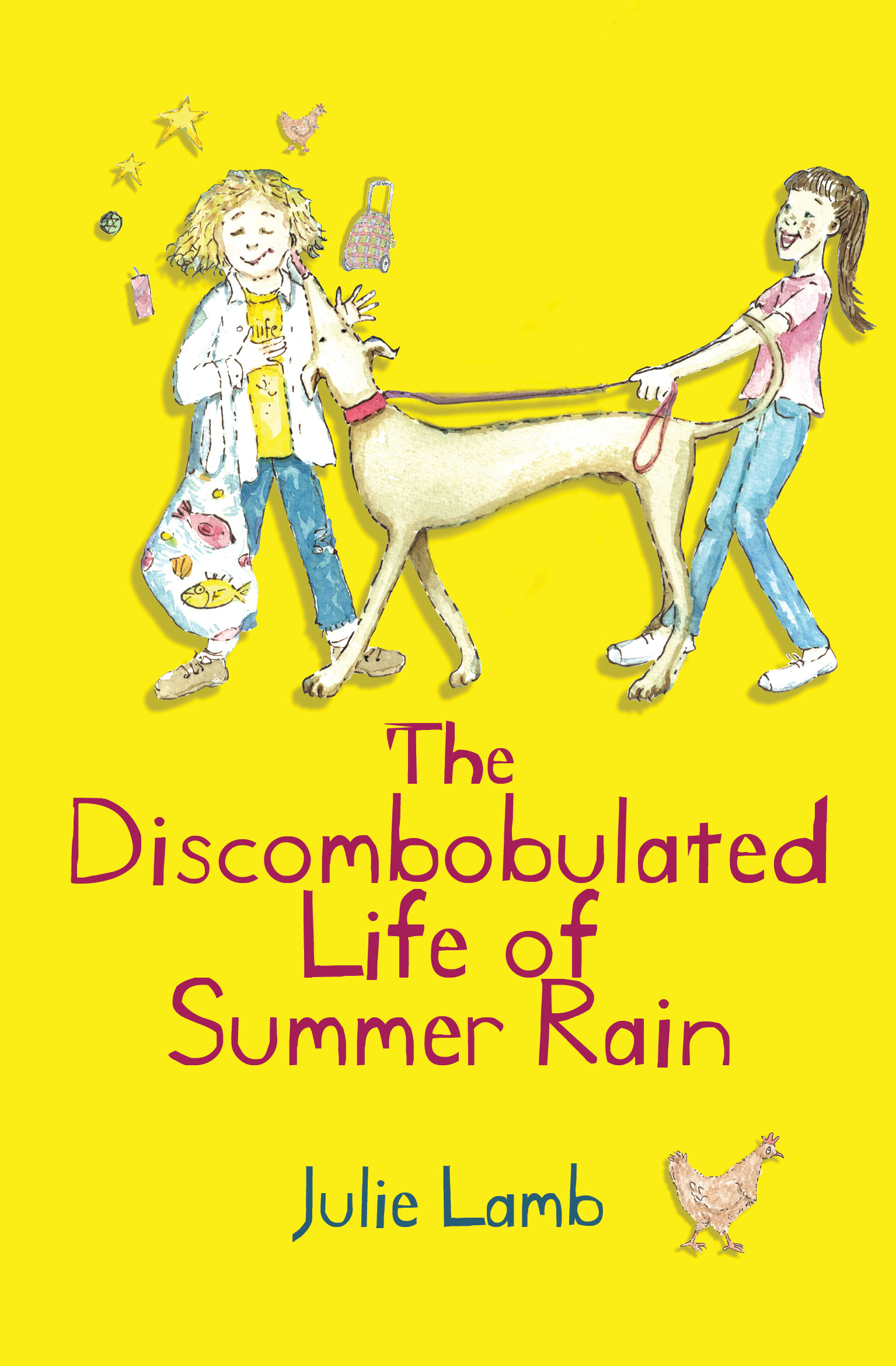
The Discombobulated Life of Summer Rain
By Julie Lamb
Published by Mākaro Press (Submarine)
RRP $25.00
Where do story ideas come from? The corners of our subconscious, snippets of conversation with friends, focussed brainstorm sessions fuelled by excessive amounts of caffeine, or divine intervention?
Try the last one.
You see, eight years ago (yes, that long) I went to Christmas Eve Mass with my parents. Truth is, I wasn’t keen. I remember looking at the sky before entering with the air of a convict as the jail door swings before them. In that moment, I had a quick word with Himself. ‘Okay, God, seeing as it’s your birthday, I’m here; it’s my present to you. But if you’re keen on giving me a Christmas present, I’d love a great story idea. Just saying.’
Crazy, I know.
‘Okay, God, seeing as it’s your birthday, I’m here; it’s my present to you. But if you’re keen on giving me a Christmas present, I’d love a great story idea. Just saying.’
Having said that, on Christmas Day morning an idea popped into my head while watching movies. I had the whole outline down in half an hour. Only later did I stop and think – hang on, I got the idea on Christmas morning, isn’t that when you receive gifts? Readers can make up their own minds. However I figured, if the story were published, I’d better pass on the credit.
So there you go – job done.
Any writers reading this will note my spectacular blunder. I forgot to ask for the idea to arrive fully formed. At this point, my first book wasn’t published and I remember thinking, I’ve got a great idea but I’ve no idea how to write it. So I’ll give you a condensed version of what happened next.
I wrote the first draft in a month and spent five years rewriting.
The longer version?
Well, it was influenced by two films around that time: one was Peter Pan and the other was Turtles Can Fly, the latter being a hard-hitting but eye-opening view on war from the perspective of children. I also remembered my great aunt telling me about hiding in cellars during riots in Beirut and straight away, I knew my setting and characters began to develop.
There were dark times. I spent a year trying to decide between third person and first, before a course with James George put me straight. I spent another year getting the first three chapters right before scrapping them all and, still, I knew something wasn’t working. You see, it was lacking ‘the voice’. Another six months during my writer’s residency in Otago, and I realised just because my main character was imaginary didn’t mean he wouldn’t talk like a regular kid. Duh.
How many rewrites of this novel? Don’t ask. Over fifty, at least.
So that’s the brief story of my road to publication on The Impossible Boy. It really was a journey of faith, though not the usual kind. I believed in my story, right from the start and stuck with it. I had faith in my idea, and nothing else.
Now I’m editing another story, saying the usual prayers and wondering if overdone roast dinners count as a burnt offering. Will it take seven years? God help me.
No, really, if you’re not too busy … I’m open to a deal.
Leonie Agnew
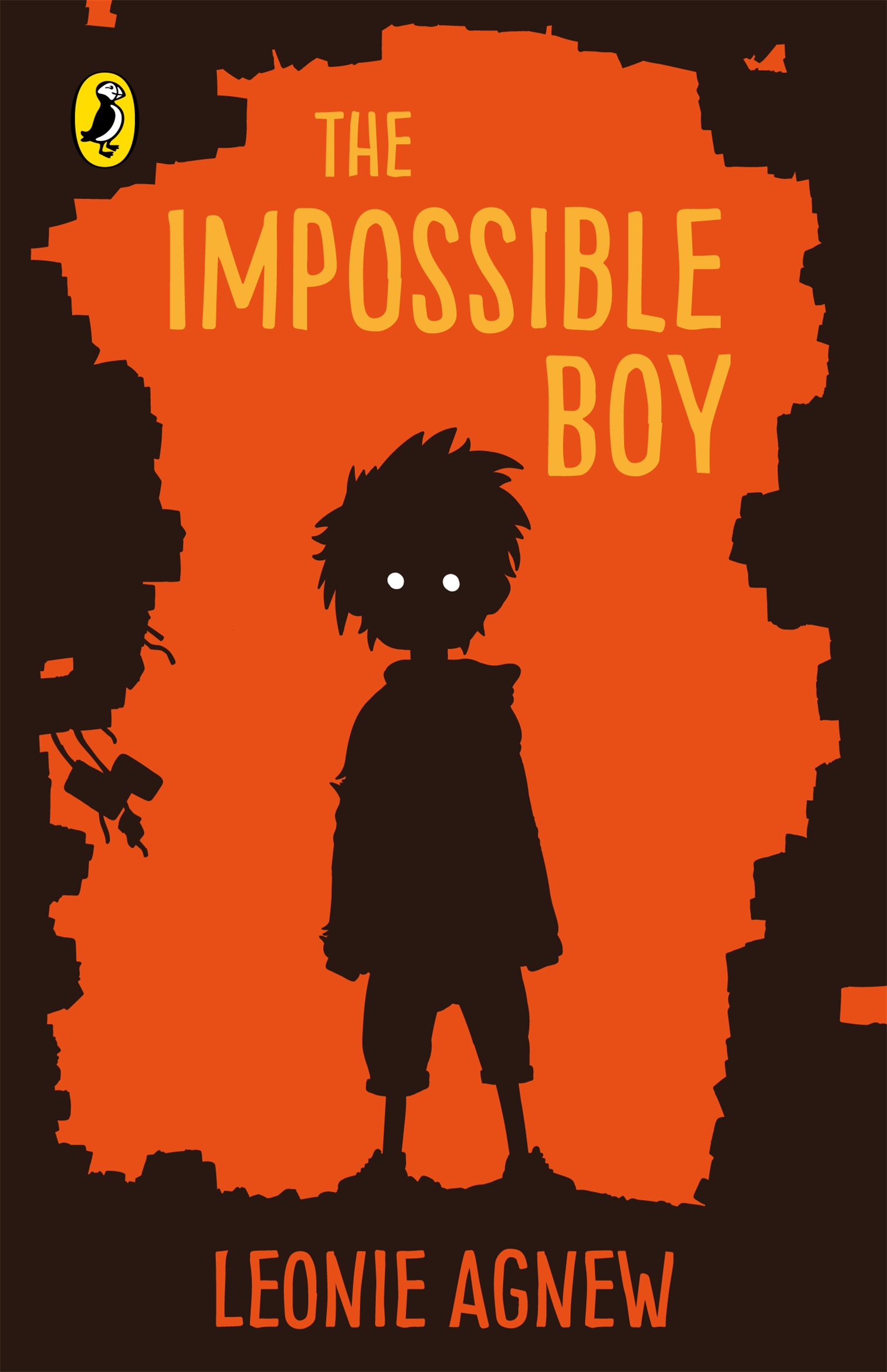
The Impossible Boy
By Leonie Agnew
Published by Penguin Random House NZ
RRP $19.99



